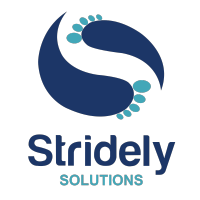SAP Cloud Platform: Everything that your Enterprise must know

To begin with, SAP Cloud Platform is a leading platform, crafted as a service for building brand-new applications in a secure cloud computing environment by SAP. Moreover, it is also a platform for propagating existing applications managed by SAP. So, the SAP Cloud Platform merges seamless business procedures and data.
Top BI Tools for Augmented Analytics: Find Perfect Fit for Your Enterprise

Augmented Analytics has changed the way of contemplating analytics and data due to its subtle blend of two emerging technologies, analytics and AI. The rising future of all the business intelligence tools (BI) can provide the crucial features so that users can gain various insights into understanding those features.
10+ RPA and Machine Learning Business Use Cases

Cutting-edge technologies, including AI, could immensely aid enterprises in disclosing engagement, productivity, and hardware collaboration with powerful and smart automation, RPA, and predictive ML. AI could be identified as the leading science of imitating human behavior.
SAP Business One for Manufacturing: Key Features and Guide

Regardless of the business’s size and nature, owning an ERP Implementation is a must. This one tool can streamline tons of business fronts and enhance business productivity. Those who are looking for a comprehensive, cost-effective, and centralized ERP solution must consider SAP Business One.
Business Transformation with Microsoft Dynamics 365 and Power Platform

All through these years, Microsoft Dynamics 365 and Microsoft Power Platform have earned notable significance as these two tools can effectively break- down barriers, leverage team’s productivity, help a business to adapt to the rapidly changing technologies, and innovate as per the business needs. The notable fact is that these benefits can be availed all across the industries.
Knowledge Discovery through Data Mining: Functioning, Techniques, Pros, Tools, Challenges & Use Cases

We live in the age of enormous data generation, where our all gadgets, services and platforms are creating footprints in digital world in form of data. Facebook alone processes around 500+ terabytes of data every day. This data is processed and the fetched information is sent to product owners, helping them build a better product or improve the current one.
Deploying Intelligent Supply Chain – Why is it Crucial and How it helps the businesses?

Delivering products, goods, and services to customers on time has become more important and complex than before. As the pandemic spread, organizations had to quickly adapt to the changes and build a supply chain that is efficient and will be able to meet the demand of customers.

